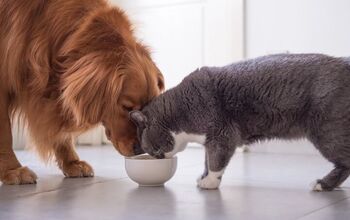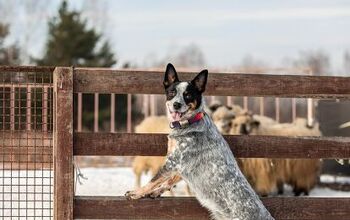SAD: Seasonal Affective Disorder in Dogs

When the days get shorter and the temperature starts to drop, many people get the “winter blues”, officially known as seasonal affective disorder. This condition affects countless people but it can also affect your dog. If you think your dog might be suffering from seasonal affective disorder, don’t just ignore it – learn what you can do to make him feel better.
Related: The Health Benefits Of Cats
What is Seasonal Affective Disorder?
During the winter, the days start to get shorter which means less sunlight and the temperatures get colder which means less time outside. Humans can adapt to these changes fairly well in most cases, but sometimes dogs do not handle the transition smoothly. Long, dark, and gloomy days can have a negative impact on your dog’s mood and may lead to the development of depressive symptoms. Seasonal affective disorder in dogs, also referred to as SAD, is a specific type of depression that is linked to the change in seasons. In most cases, symptoms of SAD start to develop in the fall and continue into the winter, which is why this condition is sometimes referred to as the “winter blues”. Though this nickname trivializes the condition to some extent, it can actually be quite serious and it is not something you should ignore.
Related: 5 Pet-Themed Coloring Books for Adults
Symptoms and Treatment Options
Seasonal affective disorder affects dogs in different ways so you need to pay close attention in order to identify the symptoms. One of the most common symptoms of seasonal affective disorder in dogs is lethargy or changes in behavior. If your dog normally greets you at the bedroom door in the morning then follows you eagerly into the kitchen for breakfast but he suddenly stops doing this, it could be a symptom of SAD. Loss of interest in activities once enjoyed, reduction in energy levels, and general depressed mood are all symptoms of seasonal affective disorder in dogs.
Many dogs with seasonal affective disorder exhibit changes in behavior – changes in eating habits are also common. If your dog usually wolfs down his dinner but suddenly seems reluctant to eat or eats much less than usual, it could be a symptom. Another common symptom of SAD in dogs is whining or whimpering – your dog might suddenly become more demanding for attention. In other cases, your dog might develop aggressive tendencies or destructive behaviors. Some dogs also display an increase in accidents in the house due to reluctance to go outside.
Just as the effects of seasonal affective disorder vary from one dog to another, so do the recommended treatments. Many people diagnosed with SAD use light boxes that imitate sunlight to help combat their symptoms – this type of treatment may also be effective for your dog. If a sun lamp or light box is not an option, try placing your dog’s bed under a window or skylight where he can get the most natural light possible. Even when the weather is gloomy, be sure not to skip out on your dog’s walks and pay plenty of attention to him throughout the day to keep him in good spirits. Don’t be afraid to toss a few extra treats your dog’s way if it will help boost his mood, just don’t go overboard.
Your dog is your best friend so it can be heartbreaking to see him feeling down. If you think that your dog might have seasonal affective disorder, contact your veterinarian for an official diagnosis and then work with him to get the treatment your dog needs.

Kate Barrington is the loving owner of two cats (Bagel and Munchkin) and a noisy herd of guinea pigs. Having grown up with golden retrievers, Kate has a great deal of experience with dogs but labels herself a lover of all pets. Having received a Bachelor's degree in English, Kate has combined her love for pets and her passion for writing to create her own freelance writing business, specializing in the pet niche.
More by Kate Barrington























